Хаас за Белгия
Ромен Грожан:
Belgium is the home of Haas Automation’s European headquarters. You’ve been to many appearances and interacted with many Haas Automation customers. How have they embraced the team and Gene Haas’ endeavor into Formula One?
Every time we do something with Haas Automation it’s been very well organized and we always receive a very warm welcome from all the guests attending. It’s been great to be representing Haas Automation in Formula One. It’s a big name in motorsports and a big name in industry. Whenever we meet their customers, especially when we’re with Gene (Haas), they’re always very happy. It feels like a big family, which is nice to be a part of.
Spa has been called a driver’s track. Why?
It’s just a great track. There are very high-speed corners and there are a lot of turns, different types, some high speed, some low – just a good variety overall. It gives you a good feeling to drive.
Spa has always been an incredibly fast racetrack. Was that sensation of speed heightened last year with this new generation car? If so, were there any sections in particular where you noticed the uptick in speed?
Spa is a very high-speed circuit with a lot of good fun and good memories, but I’ve got to admit that last year from turn five to the backstraight of turn 15, the whole middle part of the circuit has been much faster. We’ve had that feeling from the extra grip and downforce of the new cars.
Spa has high-speed straights and corners combined with a tight and twisting section, especially between turns eight and 15. How do you set up your car to tackle all the different aspects of the track? Do you have to make sacrifices in one section to gain an edge in other sections?
You always see different approaches at Spa. Either you’re fast in sector one and sector three, which are the high-speed sectors, or you’re fast in sector two, which has more of the corners. Both work pretty well, so it’s a matter of how you want to approach the race.
Can you describe the sensation you feel inside the car when you drive through Eau Rouge and Raidillon? Are you able to take that section flat out?
The first lap you go through flat out, you feel sick, like you’re on a rollercoaster because it goes up and down. You’re thinking, will I make that for the race? But, once you’ve done it once, it’s all ok and you just enjoy the g-forces.
How important is it to enter Eau Rouge in clean air to ensure you have the maximum amount of downforce available?
It’s certainly a corner where you don’t want to have a mistake. Qualifying in clean air is certainly quite good. On the other hand, if you get a big tow, you can have a massive advantage going into turn five. There’s a bit of an argument for both philosophies there.
Your most recent podium was earned in the 2015 Belgian Grand Prix. You started ninth and made it all the way to third, finishing behind the Mercedes duo of Lewis Hamilton and Nico Rosberg. How did you make up so many positions?
We had a good car in Belgium that year. I had qualified fourth, but started ninth due to a gearbox penalty. We had a good strategy and good timing with a safety car, too. I managed to overtake a few cars and get on the podium. Honestly, it was one of those weekends where everything just goes to plan.
Prior to the 2015 Belgian Grand Prix, your last podium came in 2013 at the United States Grand Prix in Austin, Texas. How good did it feel to get back on the podium, especially after enduring a 2014 season where you only had two point-scoring finishes?
It was great for all the guys, and for myself. We had a perfect weekend on the track. For everyone involved, it was a very good feeling. I guess it was kind of the same feeling as scoring the first points for Haas.
Does a race like you had at Spa in 2015, where after a trying season in 2014, remind you that podiums are possible with determination and hard work?
If I turn up at a race weekend not thinking that I’m the best, or that I can’t win the race, I’d be better off staying at home with my children. I always want to be on the podium. I always want to try to win the race. Of course, it depends a lot on the car, but in the end, you can never give up and you always strive to give your best. That’s the mentality you should have.
Do you have milestones or moments from your junior career that you enjoyed at Spa?
I won the GP2 title there in 2011. That was a great year.
What is your favorite part of Spa?
I can’t choose just one part and say it’s my favorite. The whole circuit just comes together nicely.
Describe a lap around Spa.
You start off with the hairpin at La Source. It’s a very low-speed corner. You need a good exit to go flat out up to Eau Rogue and then you’re on to turn five, the first right-left corner. That’s normally in fourth gear. Turn seven is quite good fun. It’s a high-speed corner going down. Then you’ve got turn eight with tricky braking. You need to be well positioned on the right hand side of the exit for turn nine. Then you’re downhill again massively to the double-left turns 10 and 11 – the fastest corner of the circuit. Then it’s on to the second right-to-left corner, carrying a bit more speed than you did into (turns) five and six. The next double right hander is very important to go to the backstraight, which is very long. You then go through the Bus Stop chicane – you need big braking. Then you have a very tricky low-speed corner, where the exit and the traction are tricky. It’s very difficult. If you get it right, you get a good lap time.
Кевин Магнусен: Belgium is the home of Haas Automation’s European headquarters. You’ve been to many appearances and interacted with many Haas Automation customers. How have they embraced the team and Gene Haas’ endeavor into Formula One?
It’s always great to meet the Haas Automation guests around the world. It’s great to see how enthusiastic they are about the Formula One project. It’s good to feel like one big team.
There was a time in between the 2008 and 2009 racing seasons where you worked as a factory welder. What was the company you worked for and what were some of the projects you worked on?
The company was called Schroder Metal. I was basically welding things for shops, signs and so on.
You seem to have a good rapport with Haas Automation customers when they’re at the track. Did that time spent as a welder perhaps give you a good idea of how people make a living with their hands, specifically, how machinists use Haas CNC equipment to build things, just like you did as a welder?
I have a good understanding of how the customers work and what they do. I feel there’s a good relationship based on that synergy between myself and the whole company.
When you finally got the support you needed to continue your racing career and run Formula Renault in 2009 with Motopark Academy, how big was that moment?
It was a very big moment and a really good feeling. I was pretty depressed about not being able to race, so when I got the opportunity back it was an amazing feeling.
Spa has been called a driver’s track. Why?
I think it’s just because it’s an extremely fast, technical and challenging circuit.
Spa has always been an incredibly fast racetrack. Was that sensation of speed heightened last year with the new generation car? If so, were there any sections in particular where you noticed the uptick in speed?
Yes, everywhere – in every single corner.
Spa has high-speed straights and corners combined with a tight and twisting section, especially between turns eight and 15. How do you set up your car to tackle all the different aspects of the track? Do you have to make sacrifices in one section to gain an edge in other sections?
No, Spa is just flat out. You’re pushing everywhere.
Can you describe the sensation you feel inside the car when you drive through Eau Rouge and Raidillon? Are you able to take that section flat out?
It’s flat out. It’s a bit like a rollercoaster.
How important is it to enter Eau Rouge in clean air to ensure you have the maximum amount of downforce available?
Not so important. It will be flat anyway.
Do you have any milestones or moments from your junior career that you enjoyed at Spa?
I’ve won in every category I’ve raced there with the exception of Formula One. I have many good memories from competing at Spa.
What is your favorite part of Spa?
Eau Rouge and Pouhon are probably the best sections, but the whole track is just amazing.
Describe a lap around Spa.
Spa is obviously one of the best tracks in the world and every driver thinks so. It’s fast, challenging and fun. We’re all looking forward to going there.
Гюнтер Щайнер: Belgium is the home of Haas Automation’s European headquarters. You’ve been to many appearances and interacted with many Haas Automation customers. How have they embraced the team and Gene Haas’ endeavor into Formula One?
The customers love it. They’re truly a part of Haas F1 Team. The customers at these events have fun, and they’re able to talk and interact with our drivers.
Haas F1 Team had been strong leading into the summer shutdown. Is there any concern that the break could stymie your momentum, or do you view the break as a better way to sustain your performance, as everyone can come back for these final nine races refreshed?
I don’t see why we shouldn’t keep performing like we were before the summer break. The good thing is that everybody can have a break. Everybody was tired, and now we come back refreshed and, hopefully, continue like we did before the break.
We’re well past the season’s halfway mark, but knowing how tight the midfield is, does it almost feel like a new season when we show up at Spa after the summer shutdown because it is so tight among the midfield teams?
We need to gain the points which we lost in the first half of the season. That’s our mission – to have the best results at the end of the season.
Nearly 70 points scored in the first half of the season. What are your expectations for the second half, and can the 100-point barrier be broken this year?
I think the 100-point barrier should be and will be broken, but still you have to get them. If you want to finish fourth or fifth, you have to break it.
Last year, you switched focus to developing the following year’s car relatively early. Is the success Haas F1 Team has had this season a result of that early-season switch?
For sure, it’s part of it. We had a good aerodynamically developed car at the beginning of this season, and the time we spent last year definitely contributed to that.
Haas F1 Team is in a close battle for fifth in the constructors’ standings, and fourth remains a possibility. How does this tight points battle affect the timing for when you begin developing your 2019 car?
It’s clearly defined. We started the 2019 car a few weeks ago and there’s no point in developing the 2018 car any longer because if you do continue development, by the time you manufacture the parts, it’s near the end of the season. The gains are too small to use the parts in only two or three races. We do have a few more parts coming, but that’s it for the development of the 2018 car.
As we talk about the development of this year’s car, the FIA announced aerodynamic changes for next year’s car, specifically with a simplified front wing that will feature a larger span, simplified front brake ducts with no winglets, and a wider and deeper rear wing to accentuate DRS usage. How have these changes affected the planning of next year’s car?
It hasn’t affected the planning. Maybe we switched a few sessions before because if we were only making an evolution of the 2018 car for next year, with the same regulations, you could use whatever you learned this year for next year’s car. By changing regulations you need to start a little more fresh. So, you have to focus a little bit before and you cannot use what you developed for the 2018 car on the 2019 car.
Will Haas F1 Team bring any more updates for the remainder of the 2018 season?
Yes, we will bring a few more to the next races. They will not be big updates, but we will keep bringing them like everybody else. We’ve learned to produce upgrades, bring them to the car, and have them working. This is a step that we have achieved in 2018 that we did not have in 2017.


















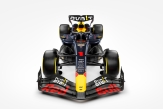
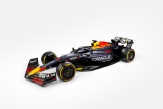

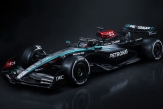
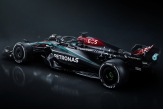


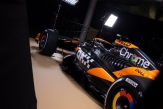

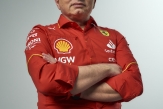
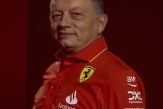
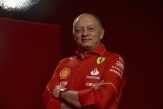

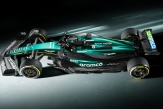

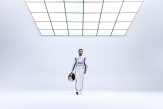


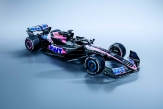
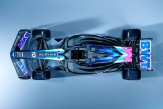

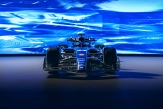
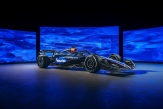
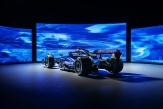
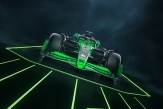
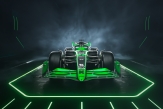
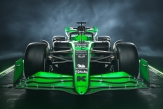

15/04/2024 от Огнян Тенчев (drJeckyll), няма коментари